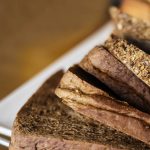Propolis, the golden ''health treasure'' hidden in beehives
How many products can a beehive ultimately produce? Honey is certainly the best known and its emollient and nutritional properties have made it an integral part of many daily meals. Other derivatives from the worker bee are pollen, beeswax and royal jelly. Each of these offers distinct benefits to humans.
However, one of the most unique by-products of bees is a glue. This glue is called propolis and its role in the beehive is fundamental, as it ensures that the hive builds a strong foundation for the hive. Propolis is produced from the sap of needle trees or evergreen trees in general. When the bees combine this sap with their secretions and beeswax, they create a sticky, greenish-brown product that is used as a coating to build their hives.
Thousands of years ago, ancient cultures used propolis for its pharmacological properties. The Greeks applied it in the treatment of abscesses. The Assyrians put it on wounds and tumors to fight infection and help in the healing process. The Egyptians used it in the mummification process.
The composition of the propolis can vary depending on the area where the bees forage, i.e. the trees and flowers to which they have access. For example, propolis from Europe will not have the same composition as propolis from Brazil.
Therapeutic compounds in propolis
Researchers have identified more than 300 compounds in propolis. The majority of these compounds are forms of polyphenols. Polyphenols are antioxidants that fight free radicals, the accumulation of which is responsible for disease and damage to the human body.
Specifically, propolis contains polyphenols called flavonoids. Flavonoids are produced in plants as a form of protection. They are commonly found in foods thought to have antioxidant properties, such as fruits, green tea, vegetables and red wine.
Research results
Propolis is believed to have antibacterial, antiviral, antifungal and anti-inflammatory properties. Not all possible mechanisms of action have yet to be established, but researchers are confident that the bee product appears to provide protection against some bacteria, viruses and fungi.

Propolis in winter colds
Before the development of modern medicine, doctors used propolis in bandages before dressing wounds to prevent infections. It has also been applied as a topical treatment for burns or minor wounds on the skin, as it has anti-inflammatory properties due to its flavonoids, which help reduce swelling and irritation. Its antifungal properties also make it a useful treatment against oral infections, and animal studies have shown that it can help reduce healing time and pain from oral thrush. It is also recognised as a potential treatment for wounds caused by the herpes simplex virus.
However, its most famous use is to strengthen and protect the immune system. Numerous clinical studies confirm its beneficial effect on the defence of the human body. For example, in a double-blind study, children with severe viral disease were divided into two groups. Some received standard antibiotic treatment and some received other antibiotics in combination with propolis. The group that received propolis got over the condition much faster. In general, it has been studied and found that propolis supports the immune system by promoting the body's natural defenses and resistance to bacterial, viral and fungal infections. In particular, it has been found to stimulate the production and activity of macrophages, immune cells involved in defence against pathogens, and the development of antibodies.
Propolis can be pleasantly taken with the help of dietary supplements. So choose supplements containing an extract of this miraculous glue, such as Family’s Syrups Propolis & Honey για να προστατευτείτε με φυσικό τρόπο από του κινδύνους που επιφυλάσσει ο χειμώνας.





